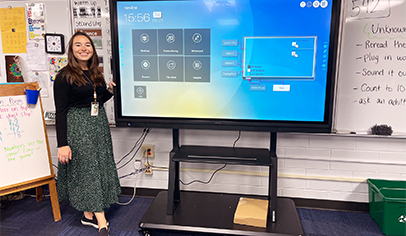ESSER Grant Funding Has Ended—Here’s What That Means for School Fundraising

With ESSER funds expiring, school districts will have to make some tough decisions about what programs to keep and how to pay for them. How will this impact your PTO's fundraising plans?
If you’re a newer PTO or PTA leader who’s taken on an officer role in the past few years, chances are you’ve never heard about ESSER (Elementary and Secondary School Emergency Relief) funds. But there’s a lot you should know about the billions of pandemic-era dollars awarded to schools since 2020 and why the end of this grant program could affect your parent group.
Maybe your school bought new playground equipment or purchased smart boards for each classroom. Unless your parent group bought the equipment, then whoever paid for those welcome upgrades probably didn’t cross your radar. It could have been funded by one of these grants. Historically it was PTOs and PTAs who fundraised for some big-ticket purchases that schools couldn’t afford, and now that the ESSER funds have ended you could be asked to fundraise for expensive items again.
What are ESSER funds?
Back in 2020, the U.S. Department of Education threw a lifeline to K-12 schools in the form of three grants totaling 200 billion dollars (yes, with a “b”) to help them operate through the uncertainty and upheaval caused by the coronavirus pandemic.
Known as the ESSER funds, these Elementary and Secondary School Emergency Relief dollars went to states and districts to:
- help reopen schools safely
- make the pivot to remote learning
- address mental health needs
- deal with pandemic-related learning loss
- make physical and mechanical improvements to buildings
- help manage staffing
But here’s the kicker—the deadline for the last of these funds has expired (unless your district filed for an extension) and now school districts have to make some tough decisions about what programs to keep and how to pay for them.
What did billions of dollars buy?
Billions in relief money paid for academic support, facility improvements like HVAC systems, air filtration, heating and cooling, and custodial supplies, for example, updated mobile tech for students, and school staffing and retention resources. Those big projects with high price tags were necessary to keep schools open.
Billions more were funneled into projects that parent group leaders have supported in whole or in part in the past.
Take a look at these numbers:
- Summer learning programs: More than 2,900 districts split $3.048 billion
- Summer learning and afterschool programs combined: 780 districts got $1.771 billion
- Family communication and training/community engagement: More than 1,200 districts received $596 million
- Arts education: 270 districts received nearly $225 million
- STEM programs and supplies: 377 districts got more than $160 million
- School supplies: More than 400 districts received $70 million
- Outdoor/playground equipment, fitness equipment, outdoor classrooms, and shade structures 750 districts secured more than $520 million
- Water bottle filling stations: Nearly 400 districts got $115 million
- Smart panels: 490 districts used $312 million
Will the end of the program change how you fundraise? It depends.
PTOs and PTAs used to pay for programs and classroom tools with profits from fundraisers and field days, for example. Then ESSER funding took some of the pressure off many parent groups. While not every school or district earmarked grant money for items like playgrounds or smart boards, the end of these grants should be a call to arms for every group. In light of these developments, this may be an appropriate time to reexamine your budgets to make sure that all of the programs that you want for your students and your school will be properly funded.
Budgets help make all of your financial decisions easier, and the benefits are many. If you’ve inherited a parent group operating without a written budget, Budget Basics for PTOs takes you through the steps to create a plan to have control over your money.
Get informed and adjust
If you don’t already have a great working relationship with school administration, consider this an opportunity to collaborate with your principal. Talk to her and be better informed about how budget changes might impact programs you’ve typically supported. If your group’s mission aligns with keeping one or more of these programs running, you can decide together how your PTO can help.
For strategies to help you build a good working relationship with school administration, read Make the Principal Your Partner.
Take a close look at your fundraising—what fundraisers you run, how you spend your profits, and how many you run each year. If budgets are going to increase, do you need to rethink what types of fundraising you want to do? Now’s the time to adjust so you can compensate for any shortfalls.
Check out How To Choose a Fundraiser for advice about picking a program that’s right for your group so you can bring in profits while best using your resources.






















